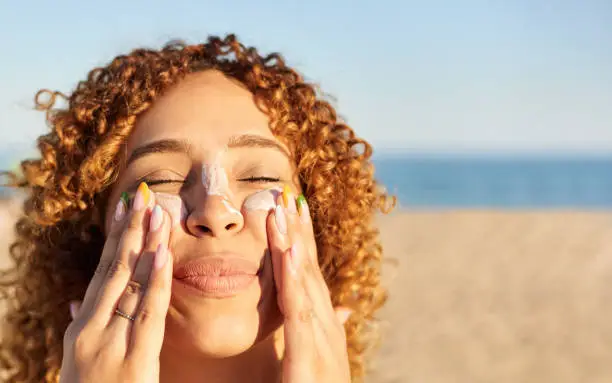Summer is here, and that means it’s time to hit the beach! While soaking up the sun and enjoying the waves can be a lot of fun, it’s essential to protect your skin from harmful sun damage. Prolonged sun exposure can cause sunburn, premature aging, and increase the risk of skin cancer. The good news is that protecting your skin at the beach doesn’t have to be difficult. By following a few simple steps, you can ensure that your skin stays healthy, hydrated, and safe while you enjoy your beach day.
1. Choose the Right SPF Sunscreen
One of the most important steps in protecting your skin from sun damage is applying sunscreen. SPF 50 sunscreen offers high protection against both UVA and UVB rays, which are responsible for causing sunburns and skin damage. SPF 50 blocks about 98% of UVB rays, making it an ideal choice for spending extended time outdoors, especially at the beach.
When selecting an SPF sunscreen, be sure to choose a broad-spectrum formula, meaning it protects against both UVA and UVB rays. Apply sunscreen generously to all exposed areas of your skin, even if you’re planning to spend time in the water. Reapply it every two hours, or more frequently if you’re swimming or sweating.
2. Seek Shade When Possible
While sunscreen is essential, it’s not the only method of protection you should rely on. Whenever possible, seek out shaded areas, especially during the peak sun hours between 10 a.m. and 4 p.m. Look for umbrellas, beach tents, or even natural shade from trees. This will reduce your overall sun exposure and lower your risk of sun damage.
3. Use Sunscreen for Dry Skin
If you have dry skin, it’s crucial to pick a sunscreen that not only protects but also hydrates. Sunscreen for dry skin typically contains moisturizing ingredients such as aloe vera, glycerin, or hyaluronic acid, which help maintain your skin’s hydration levels throughout the day. These sunscreens help to prevent that tight, flaky feeling that often accompanies sun exposure, leaving your skin soft, smooth, and protected.
Make sure to apply sunscreen to your entire body, including commonly overlooked areas like the back of your hands, feet, and ears. Don’t forget your lips—use a lip balm with SPF to protect them from harmful UV rays.
4. Wear Protective Clothing
In addition to sunscreen, wearing protective clothing is a great way to guard against sun damage. A wide-brimmed hat can protect your face, neck, and ears from the sun’s harmful rays. Lightweight, long-sleeve shirts and pants made from UV-protective fabrics are also great options for covering your skin while still staying cool.
If you’re not keen on covering up entirely, consider wearing a rash guard or swim shirt for extra protection while in the water. These garments are designed to block UV rays and are perfect for anyone spending a lot of time at the beach.
5. Stay Hydrated
Sun exposure can leave your skin feeling parched and dry, especially if you’re in the sun for a long time. To keep your skin healthy and hydrated, drink plenty of water throughout the day. Staying hydrated helps to maintain your skin’s natural moisture barrier, preventing dryness and irritation. If you’re in the sun for an extended period, you can also use a hydrating mist or facial spray to keep your skin refreshed.
6. Avoid Tanning Beds
It might seem tempting to get a quick tan before heading to the beach, but tanning beds can increase your risk of skin damage and premature aging. They emit UV radiation that can be just as harmful as the sun’s rays. Instead of risking your skin’s health for a tan, consider using a self-tanning lotion or spray to achieve a bronzed glow without the harmful effects of UV exposure.
7. Be Mindful of Reflective Surfaces
Did you know that sand, water, and even snow can reflect UV rays and increase your exposure to the sun? At the beach, the water reflects sunlight, and the sand can bounce UV rays back up onto your skin. To counter this, be diligent about reapplying your SPF 50 sunscreen regularly, and don’t forget areas like the bottoms of your feet or your scalp if you’re not wearing a hat.
Conclusion
Enjoying a day at the beach is one of life’s simple pleasures, but it’s important to keep your skin safe from the damaging effects of the sun. By choosing a high-SPF sunscreen like SPF 50 sunscreen, using sunscreen for dry skin, seeking shade, wearing protective clothing, and staying hydrated, you can help keep your skin looking youthful and healthy for years to come.
Remember, skin protection is an ongoing process, not just a one-time event. Make sunscreen a part of your daily routine, and always prioritize your skin’s health when enjoying the sun!
